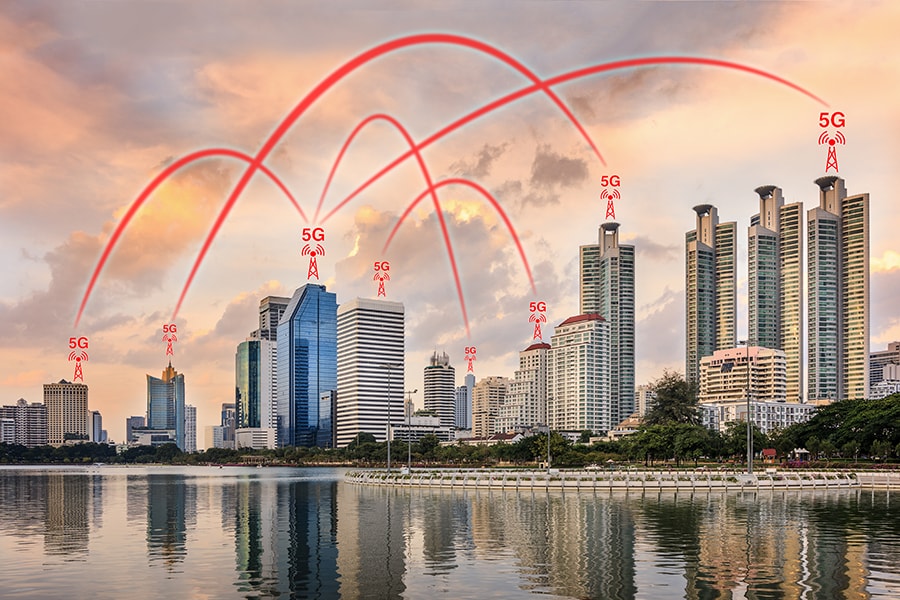
Thinking Beyond 4G-Need Of The Rapidly Changing World

We share an intimate relationship with our cellphones. Stable high-speed internet connectivity has become as important as stable resting heart rate in our life. 4G is a buzzword today as it promises to deliver excellent user experience. For many folks, 4G is the “faster version of 3G.” Others believe 4G is all that we need for future.
But in this uncannily dynamic world what looks as the finest achievement becomes the foundation for the next big revolution.
Welcome to the world of 5G…

And let’s be pretty clear about one thing—5G is just not an “extension” of 4G.
Every new generation of wireless technology tries to improve the user experience by enhancing voice quality and delivering high data speed. 3G ushered in the picture era whereas 4G was about the video revolution. The 5G future is much more than allowing a 4K feature to be downloaded on your phone in 18 seconds while zipping through the city.

The Gartner, Inc. has predicted that 20.8 billion connected devices will be in use by 2020. This would be a massive surge from around 6.4 billion devices that were connected at the turn of 2016.
5G will support a variety of devices at an unimaginable scale. It will play a central role in expanding the suite of mobile capabilities and interconnectedness. High speed, Low-latency and low-power requirements will help in building vast networks of EMBB (Enhanced Mobile Broadband), MIoT (Massive Internet of Things) and boost MCS (Mission Critical Services).
5G aims to transform your mobile into a GPT (General Purpose Technology) that will revolutionise the entire economy and drive massive innovation. GPTs across the ages have catalysed transformative changes that were unheard of. Electricity changed the way industries functioned, and the Internet brought in the digital era. 5G promises to transform the everyday mobile and change forever how businesses are conceived.
Once 5G becomes a “new norm” mobile will turn into a pervasive medium connecting devices, transmitting information and facilitating transactions. We are innovating rapidly in all the domains but are restrained by the interconnectivity among different devices. An ultra-low latency solution is a fundamental necessity to avoid any fatalities in autonomous self-driving vehicles, one of the biggest challenges industry is trying to solve right now.
Similar low-latency solutions are required across industries wherein the margin of error is non-existent. The advent of 5G aims to resolve this problem. A few of the fascinating ones will be in the areas of telehealth, smart cities, autonomous vehicles, smart grids, VR and remote monitoring.
5G will bring in a new era of economic prosperity. In an independent study “The 5G Economy” IHS Markit has pegged 5G’s contribution to global economic output at $12.3 trillion in 2035. This is higher than the aggregate consumer spending in China, Japan, Germany, UK and France in 2016. Automation and technological advances are widely considered to be the bane of employment, but 5G is touted to generate 22 million jobs and fuel long term real growth across economies. Businesses will be able to scale better, manage customers efficiently and experiment with new business models once the 5G is launched on a mass scale. Needless to say, 5G revolution promises to deliver socially equitable growth.
But we rarely bother to know what makes such revolutionary changes possible.
The journey to reaping the benefits of 5G is full of challenges. Technological shifts could well be a topic of casual coffee-table discussions, but they consume years of toil and hard work.

Qualcomm has proven its mettle in the mobile communications space multiple times in the last couple of decades. It is widely recognised as the pioneer in the industry that enabled mobile to mobile communications.
In a price conscious economy like India, Qualcomm has forayed into the space of entry level LTE and 4G feature phones. This has effectively made it possible for anyone, corporates and individuals alike, to tap into the massive power of 4G with a basic phone at very reasonable prices.
It plans to maintain the pole position in the case of 5G as well. Of the many innovations being pursued, notable are the ones that aim to better utilise existing and the new spectrum, enable intelligent HetNets, enhance the user experience by using macrocells and reduce latency in the overall system.
Will 5G be the acme of the digital revolution? For pioneers, the path is ever evolving.
Qualcomm's technologies powered the smartphone revolution and connected billions of people. It pioneered 3G and 4G—and now it is leading the way to 5G and a new era of intelligent, connected devices. Qualcomm’s products are revolutionising industries, including automotive, computing, IoT, healthcare and data centre, and are allowing millions of devices to connect with one another in ways never imagined before. For more information, visit Qualcomm website .




